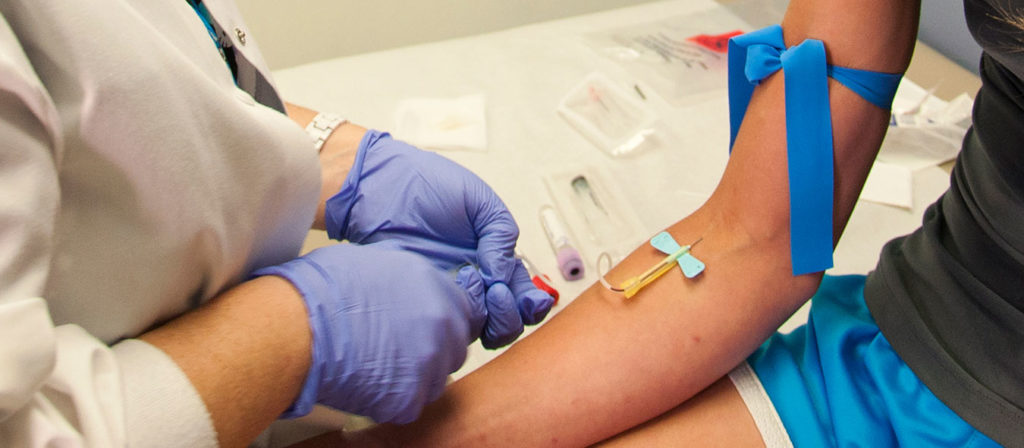Getting tested for deep vein thrombosis, or DVT, can disrupt a patient’s whole day. Typically, one of the first methods a clinician uses to diagnose the condition is an ultrasound in order to see the blood vessels in a patient’s legs and assess blood flow. From check in to check out, the procedure can take several hours. For rural patients, who often drive long distances to reach medical practices where the necessary equipment and personnel are available, the process is even more onerous.
Albeir Mousa, a professor of vascular surgery at West Virginia University, has used an innovative, faster method for ruling out DVT in patients before they have an ultrasound. He and his research team found that measuring the level of a specific protein—called D-dimer—in a patient’s blood may predict whether a time-intensive ultrasound is warranted. The “Annals of Vascular Surgery” has published the team’s results.
“Usually waiting for a venous ultrasound would be a matter of three, four, five hours. With the D-dimer test, it’s a few minutes and you’re done,” said Mousa, who teaches at the WVU Health Sciences Charleston Campus.
Deep vein thrombosis arises when a blood clot forms in a major vein, typically in the leg. As a result, a patient’s leg swells up, reddens, becomes painful and feels warm to the touch. If the clot travels to the patient’s lung, it can kill lung tissue. If it doesn’t travel, it can still cause chronic abnormalities in the leg’s blood circulation.
D-dimer is a marker for the trace elements left in the blood stream as the body works to degrade blood clots. Checking for an elevated D-dimer level is a good first-line assessment for blood clots.
Mousa’s first round of research involved reviewing the medical records of 360 patients who, over the course of one month, visited an emergency room with complaints of leg swelling and pain. All of the patients whose D-dimer levels were elevated went on to be diagnosed with DVT, but none of patients with typical levels did. On the other hand, just 14 percent of the patients who underwent ultrasound imaging—a long and relatively pricey procedure—tested positive for DVT.
Mousa’s second, larger round of testing (which involved 1,670 patients) produced similar results. And potentially 762 immediate ultrasounds could have been eliminated by using the blood test. Because it costs about $1,557 less than ultrasound imaging does, the blood test has the potential to save the hospital system more than $1 million per year, Mousa concluded.
“It’s a very simple sample of blood, which is sent to the lab. And usually in 15 or 20 minutes, you have significant information that can help you take good care of the patients,” he said. “And you can send patients home quicker, with less demand on the hospital staff and the institution, yet increase patient satisfaction.”
Originally from Cassie Thomas for WVU Today.
